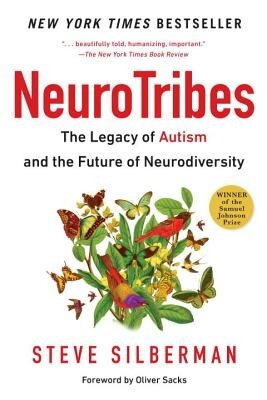Over and over again mainstream media continues to allow able-bodied actors to play non-able bodied roles. Films such as the Shape of Water (2017), Me Before You (2016), the Upside (2017), and the latest addition to this long list: Music, a film by singer-songwriter Sia being released early 2021. The long list of movies, films, TV shows, and other media comes at no surprise to the disability community who over and over again voice “nothing about us without us” when it comes to representation. But once again this community is being sidelined by the people in power, in the majority, so as not to be heard or seen in mainstream society.
Music is an upcoming American musical drama film. The film's screenplay was co-written by Sia and children's book author Dallas Clayton and stars Kate Hudson, Maddie Ziegler and Leslie Odom Jr (Stevens, 2020). The singer’s directorial debut follows Music, a young girl with nonverbal autism, who finds herself in the care of her older half-sister, the newly sober Zu (played by Kate Hudson). The first trailer for the film arrived on Thursday, November 19, and the response within the disability community has seen many disappointed with Sia’s decision to cast her frequent collaborator Maddie Ziegler as Music rather than someone who is actually autistic. It is clear to the disability community and their allies what Sia’s film represents: Implicit ableism. The film itself, and Sia’s defense of her film is nothing more than an attempt to profit off of a marginalized and oppressed community with no concern for how the film makes those within that community feel. While I use Sia’s film throughout this post, please note the same arguments apply to many other media portrayals that use non-disabled actors to play disabled characters.
The film “Music” feeds ableist inspiration porn and is written from and for a neurotypical gaze. As previously stated, Music is played by neurotypical actress Maggie Zeigler. It is yet another example of how neurotypicals feel entitled to wear Autistic behaviors as a costume. Simply put, Zeigler can act out actions that are frequently mocked and belittled for natural Autistic mannerisms, while experiencing none of the stigma Autistic individuals face exhibiting the same behaviors. Autistic portrayals in the media are usually viewed as pity projects or in the inspiration porn folder. Their diversity and depth of personalities are too often overlooked- centering on neurotypical feelings. Sia needs to learn that Autistics don't exist to inspire others or fuel savior complexes, nor make anyone feel better about their own privilege. And they especially don't deserve to be profited off of.
To “educate” her-self on Autism Spectrum Disorder during the initial stages of the film's production Sia admits to turning to Autism Speaks, an organization widely despised by Autistics and commonly perceived as a hate group. This organization is notorious for silencing, suppressing, and speaking over Autistic voices. It is important to know how this widely popular organization operates to understand why non-disabled consumers are so glossy-eyed about disability representation- which in turn leaks into all areas of Autism portrayal by Neurotypical individuals. Autism Speaks stigmatizes Autistic existence, pushing a narrative of inspiration porn, pity, and dehumanization. With all that said, Sia stated on Twitter she had “no idea” how problematic Autism Speaks is, and that she is “bummed” she promoted them. The fact that she said this after she boasted of “years of research” utterly proves that her research has not involved learning directly from and prioritizing the opinions of actual Autistics.
Maddie Zeigler’s “research” for her role was extremely disturbing and dehumanising. She states to various news outlets that she watched YouTube videos uploaded by parents of Autistic children having meltdowns in order to learn how to “act” the role. Let it be known, publicly posting an Autistic child’s meltdown which is a state of complete, painful overload of the nervous system) for strangers to consume is a violation of the child’s autonomy and dignity. Especially because they cannot consent to the public posting of such films. Creating such posts exploits children. This is their most vulnerable and traumatised state-- and these videos purpose is to garner sympathy for their parent/s. Yet again, another example of painting Autistic people as pity projects. It is dehumanizing, non-consensual, and abusive. These videos spread immense ableist stigma against Autistic people, and exposes them to mockery. If Zeigler had included Autistic perspectives and guidance in her research, the very people she intended to impersonate, she would have learned these ideals. Instead she was lazily complicit in the cycle of abuse against them.
Sia believes that casting an Autistic actor for the role would have been “cruel” to that individual. Yet, many talented Autistic actors have come out stating they would have eagerly taken the role. On Twitter, these Autistic actors, including non-speaking Autistics, voiced they would have powerfully drawn from their own lived experience in the portrayal of the role in Sia’s music video. They state, “Autistic people absolutely accel in acting careers, because they’ve spent their entire lives learning how to act in different ways and adapt to fit into countless contexts in a society not designed for them.” Actors are doing their job and just acting, is one side of the argument in this case, except it is not. According to the World Health Organization (2018), disabled people make up 15% of the global population making them the largest marginalized communities. According to GLAAD’s 2019 “Where We Are On TV” report, only 3.1% of characters on TV are disabled, and 95% of characters with disabilities are played by able-bodied actors. Disabled actors are given roles as disabled characters proportionate to a splinter of that global percentage. It is clear that mainstream media does not believe that disabled people have the ability, or should be given the opportunity, to tell their own stories. Our society values non-disabled comfort and privilege over humanising disabled existence.
Sia has tried to defend herself to critics on Twitter and other platforms. However, with every post it is a clear ableist comment made against the Autistic community, allowing her fans to feel permitted to behave the same way. She is weaponizing the power of her enormous fanbase to avoid accountability, and in many cases is leading to the gaslighting of Autistic voices. It is important to understand, just because someone’s “heart has always been in the right place” does not mean oppressed communities have to settle for ableism because it is tagged with “good intentions”. It is clear, Sia’s ego is more important than those she is harming as she has the audacity to be angry and defensive at the Autistic community for speaking out against her, and unfortunately her thousands of fans now feel entitled to do the same.
While some may say it is refreshing to see a non-verbal autistic woman being represented- especially when these narratives are not often portrayed in the media at all. But the atrocity comes from whose perspective was prioritized in the process of making the film. This is where we see the depth and nuance is left out. Sia shows immense privilege by dominating a story and conversation that isn't about her- it assumes that Autistics don't have the autonomy to decide for themselves what is best for them. In order to prevent further fueling of the ableism fire, it is important to recognize the organizations and artists we listen to in order to educate ourselves of the disabled experience. Instead let's turn our eyes and ears to those who have lived the experience, and listen as they tell their own stories.
References
Crosman, Cassandra. “The Ableist History of Autism Speaks.” In the Loop About Neurodiversity, 19 Sept. 2019, intheloopaboutneurodiversity.wordpress.com/2019/09/13/the-ableist-history-of-autism-speaks/.
Ellis, Sarah Kate. 2019, The GLAAD Media Insitute, www.glaad.org/sites/default/files/GLAAD%20WHERE%20WE%20ARE%20ON%20TV%202019%202020.pdf.
Stevens, Hannah. Digital Spy, Nov. 2019, www.digitalspy.com/movies/a34755910/sia-movie-music-trailer-autism-disability-backlash/.





















